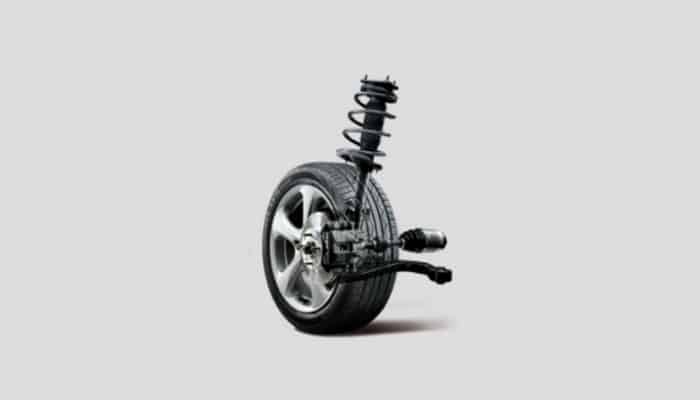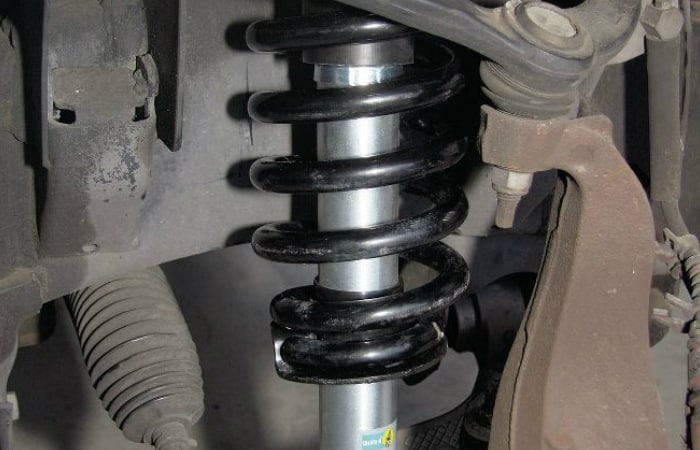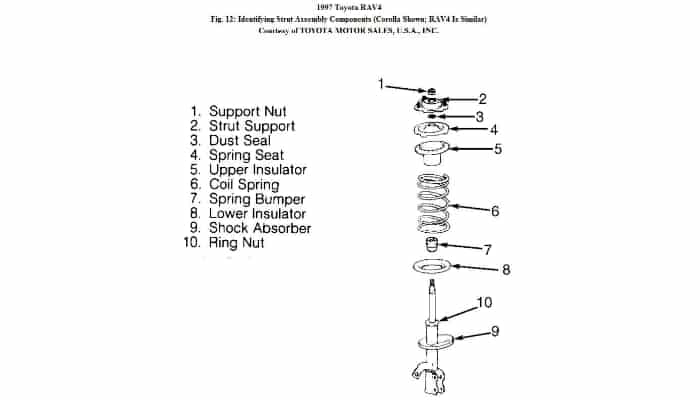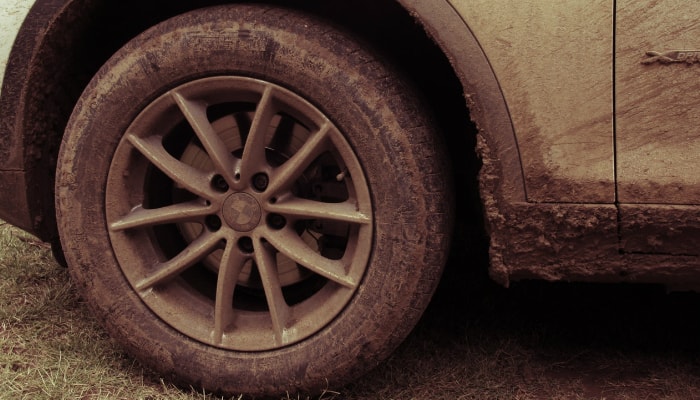Whenever people talk about automobile suspensions, the word “strut” comes to mind. For ordinary car owners, the specific functions of struts seem too hard to comprehend. What’s even worse is the confusion between struts and shocks. These components are two different things even though they are usually considered as synonyms. Focusing on struts alone, how should they be replaced if they are finally giving signs of damage? We are going to promote thorough car maintenance from top to bottom by finding answers to the question: “How long do struts last?” You know what they say – prevention is better than cure.
What Are Struts?
Since many car owners are still unfamiliar with the exact purpose of struts, it is only appropriate to talk about these components first as mere parts of an automobile. Here, we are going to discuss further the specific components of a strut as well as the list of its functions.
Components of the Strut Assembly
Discussing the parts of the strut assembly will give us a clearer view of why struts are usually confused with shocks. A strut assembly is only complete if it has the two major components namely the spring and the shock absorber. As you can see, struts are clearly different than shocks. The shock absorber is just an independent component that is a part of the strut assembly.
Regarding the main function of each strut assembly component, the spring supports the automobile’s weight and absorbs huge bumps. Meanwhile, the shock absorber focuses on weakening vibrations or preventing bouncing motions after the vehicle passes a bump.

The surprising part is that not all automobiles have struts. In fact, a lot of suspension designs have separate shocks and springs. Experts say struts are simpler and more affordable while vehicles that do not have a strut assembly are better when it comes to performance.
Functions of Struts
A strut is technically one of the parts of the suspension system. This system serves as the bridge between the wheels and the whole automobile. Struts are actually involved in the main functions of the suspension. Aside from supporting the automobile’s weight and absorbing impacts from different road obstacles such as bumps, struts help in positioning the wheels to make a successful turn.
How Long Do Struts Last?
Let’s get to straight to the point – there is no definite answer. We could provide a range but the gap is so wide. It goes to show that struts can experience damage whether the mileage is low or high.
There are several factors that affect the lifespan of struts. If the vehicle is secondhand, then it is possible that the struts would wear out faster than brand-new ones. Your locale is also a big factor. Does your area have harsh road conditions due to bad weather or climate?

Since you are probably concerned about replacing struts before problems emerge, what you need to learn instead is the set of symptoms of a deteriorating strut. Don’t worry about these signs happen way before the strut suffers total damage.
What Are the Symptoms of Damaged Struts?
The following are common symptoms of a strut that needs replacement:
Strange Tread Patterns
Harsh marks on treads are normal when the tires eventually wear out. However, there is such thing as “normal” wear patterns. As soon as an expert notices unusual patterns, it is very possible that something is wrong with your strut assembly.

Now, what is the connection between wear patterns and malfunctioning struts? Damaged struts cannot make the tires stay on the road’s surface most of the time. The main reason is constantly bouncing.
Constant Sounds
Since damaged struts can affect the suspension system, the automobile will find it hard to remain stable on the road. When the vehicle starts to make abnormal motions, the components of the suspension will collide harder than necessary. The result is rhythmic sounds such as bangs, clunks and knocks. If you will let this slide, the damage will affect other components in the chassis.
Other examples that prove sounds can signal a major vehicle problem is when you hear a squealing sound once you turn the car or notice clicks while turning the steering wheel.
Nonstop Bouncing
Actually, you do not have to wait until the tires wear out and the sounds start to dominate your trip. Once you notice uncontrollable bouncing especially when your vehicle goes over a bump, do not hesitate to consult a mechanic. Other moments that can trigger constant bouncing from the suspension are when you turn a vehicle, step on the brake or pass a road full of irregularities.
How Are Struts Replaced?
To have a rough idea of the process of replacing worn-out struts, check out these steps:
Expose the strut.
First, you have to locate where exactly the strut assembly is. Just find a cylinder piston containing hydraulic fluid. You can actually locate it easily for a big spring is firmly wrapped around it.
What you need to do is open your vehicle’s hood and look for three bolts forming a circle in the engine compartment, specifically near the windshield. The three bolts surround the strut pan’s bolt. Do not touch anything in this compartment just yet for you need to remove the wheel first. You might also need to remove the brake line support and sway bar if necessary.
Take out the old strut.
The first step to completely remove the old strut is removing the steering knuckle’s bolts. Then, focus on the hood once again for you have to remove the three bolts we mentioned earlier. Afterwards, the strut is finally loose. After pulling the strut out, remove its spring if necessary. If not, you may use the old spring for the new strut.
Install the new strut.
Once the new strut is secure inside the spring, install it into the steering knuckle. Then, position it until it reaches the hood. Secure it with three bolts just like before. Finally, you can attach the wheel again as well as other components removed earlier.
Make sure to check your vehicle’s performance first. Drive slowly in a spacious road. If you notice abnormalities, check your automobile again.
Summary
There is no clear answer to the question, “How long do struts last?” It is just a matter of awareness when it comes to symptoms of a malfunctioning strut assembly. Just keep an eye out for strange wear patterns on the tires. Additionally, do not ignore constant bouncing motions and collision sounds. Never hesitate to consult a mechanic if you are not much of a pro in DIY auto work.
For another interesting topic related to car maintenance, check out the reasons why a car will not start in cold weather. In addition, find out why a car smells like gas when parked.










